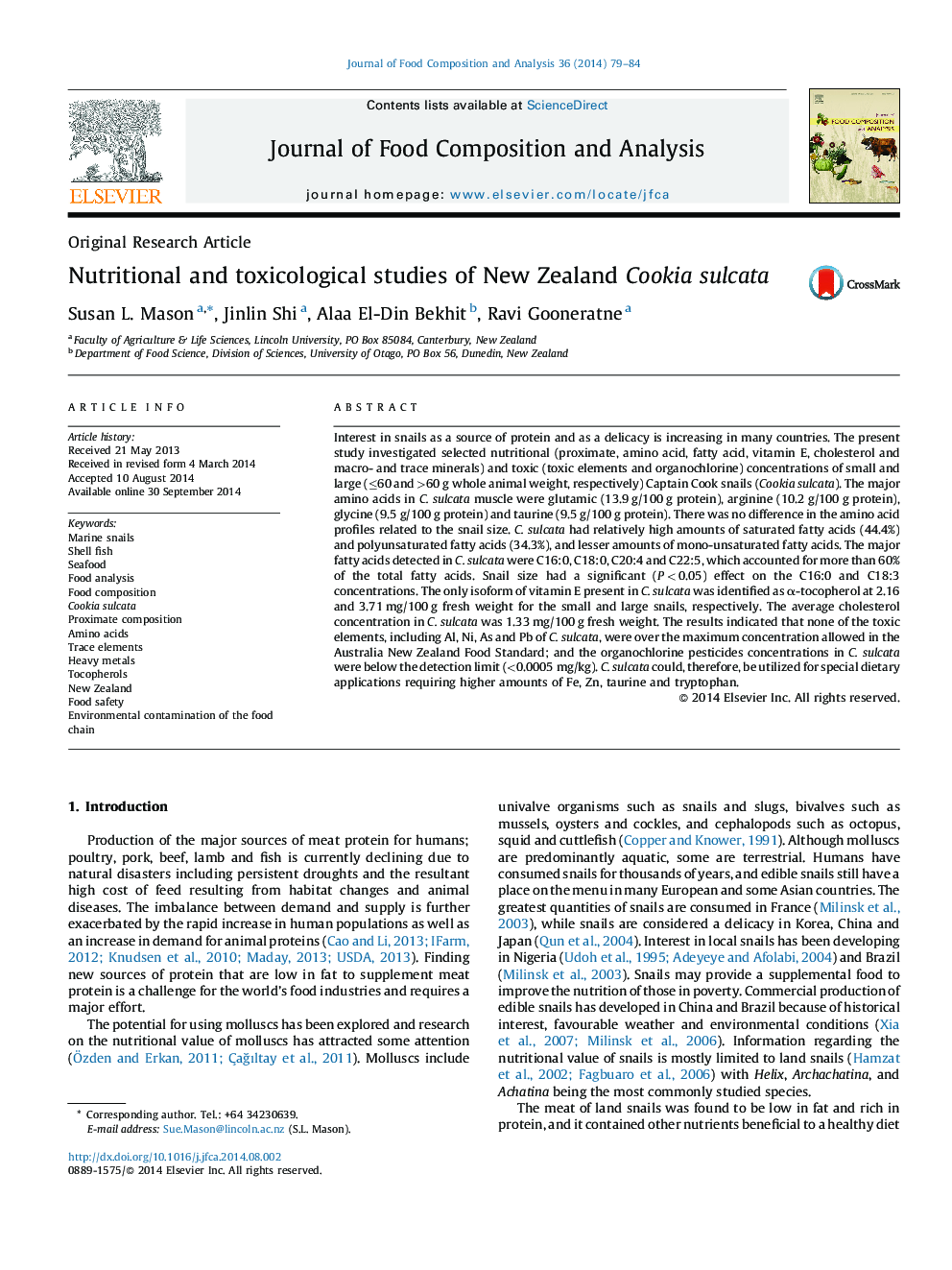| Article ID | Journal | Published Year | Pages | File Type |
|---|---|---|---|---|
| 1218201 | Journal of Food Composition and Analysis | 2014 | 6 Pages |
•Composition of C. sulcata varied slightly from that reported for marine molluscs.•The amino acid profile of C. sulcata is different from land snails.•Unlike land snails, C. sulcata had high DHA content.•C. sulcata is high in Fe, Zn, taurine and tryptophan.
Interest in snails as a source of protein and as a delicacy is increasing in many countries. The present study investigated selected nutritional (proximate, amino acid, fatty acid, vitamin E, cholesterol and macro- and trace minerals) and toxic (toxic elements and organochlorine) concentrations of small and large (≤60 and >60 g whole animal weight, respectively) Captain Cook snails (Cookia sulcata). The major amino acids in C. sulcata muscle were glutamic (13.9 g/100 g protein), arginine (10.2 g/100 g protein), glycine (9.5 g/100 g protein) and taurine (9.5 g/100 g protein). There was no difference in the amino acid profiles related to the snail size. C. sulcata had relatively high amounts of saturated fatty acids (44.4%) and polyunsaturated fatty acids (34.3%), and lesser amounts of mono-unsaturated fatty acids. The major fatty acids detected in C. sulcata were C16:0, C18:0, C20:4 and C22:5, which accounted for more than 60% of the total fatty acids. Snail size had a significant (P < 0.05) effect on the C16:0 and C18:3 concentrations. The only isoform of vitamin E present in C. sulcata was identified as α-tocopherol at 2.16 and 3.71 mg/100 g fresh weight for the small and large snails, respectively. The average cholesterol concentration in C. sulcata was 1.33 mg/100 g fresh weight. The results indicated that none of the toxic elements, including Al, Ni, As and Pb of C. sulcata, were over the maximum concentration allowed in the Australia New Zealand Food Standard; and the organochlorine pesticides concentrations in C. sulcata were below the detection limit (<0.0005 mg/kg). C. sulcata could, therefore, be utilized for special dietary applications requiring higher amounts of Fe, Zn, taurine and tryptophan.
